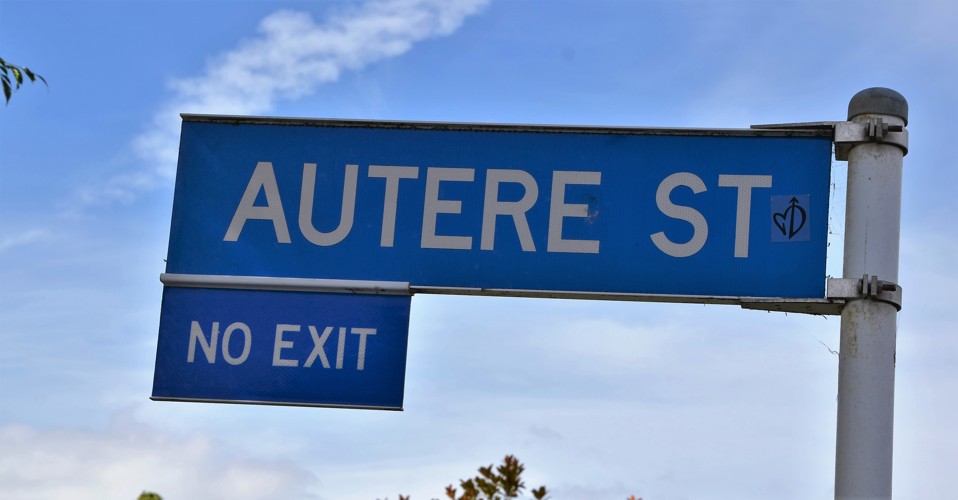 Autere Street sign. Mike Gooch. Word on the Street image collection.
Autere Street sign. Mike Gooch. Word on the Street image collection.
 Autere Street sign. Mike Gooch. Word on the Street image collection.
Autere Street sign. Mike Gooch. Word on the Street image collection.
Autere Street is a short cul-de-sac at the eastern end of Gill Street. It is named after a pā located on the city side of the Te Hēnui River and was chosen instead of Oriental Crescent which appears on early maps.
In 1915 the Taranaki Daily News described the pā site as the “old Maori Canoe Reserve”. The writer recalled watching the “intrepid Natives” battling out through the surf in their canoes, later returning with them laden with fish.
The surveyor, Frederic Carrington, had other ideas for the coastal location when he surveyed New Plymouth in 1841. His plan for a cattle market never eventuated, and the area would later become the East End Bathing Reserve. In the 1920s this was one of the most popular attractions in town, boasting a band rotunda and a two-storey pavilion.
Autere Street was surveyed off in 1902 on land that was known as ‘The Pines’. The property had been owned by Major Charles Brown and was sold after his death in 1901. A suspicious fire shortly after the sale destroyed the homestead and a development opportunity quickly surfaced.
One of the first houses to be built on the newly formed street belonged to New Plymouth architect, Frank Messenger. He designed and built a large two-storey residence on the corner of Autere and Gill Streets, which still stands today.
Recently, the New Zealand Geographic Board announced that East End Beach would be known jointly as Autere, recognising the original name for the coastal spot.
This story was originally published in the Taranaki Daily News.
Related plan:
Autere Street DP1820 (1902), ICS Pre 300,000 Cadastral Plan Index (Imaged by LINZ)
Please do not reproduce these images without permission from Puke Ariki.
Contact us for more information or you can order images online here.